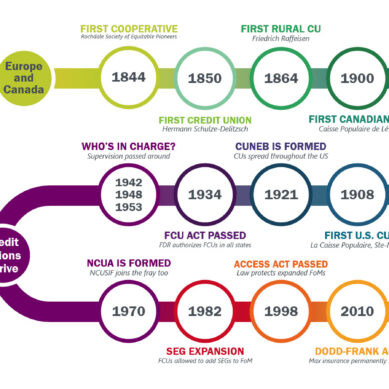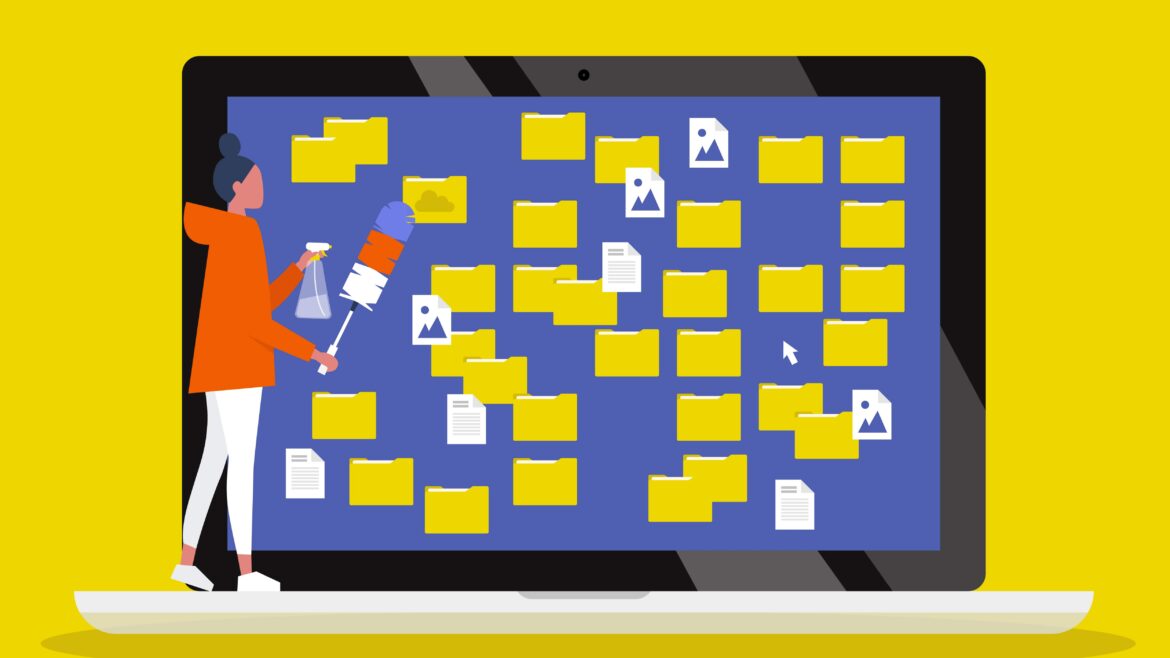If you’ve ever been outside and turned over a perfectly nice rock, you probably saw all kinds of creepy-crawly things on the underside. Data, too, can present a fair front to the world while hiding problems large and small. If you’re looking for some spring-cleaning data project ideas for your credit union, keep reading. Be warned, though—you’ll likely find some things for people to work on! Here are a dozen custom report ideas to run periodically to optimize performance, correct data, and go the extra mile in member service.
1. Collateral info attached to unsecured loan
Was the loan itself miscategorized or was the collateral info just entered in error?
2. Credit card overpayments
Some overachievers may feel a sense of accomplishment from having a negative balance due on their credit card. However, there are laws requiring financial institutions to expedite returning these overpaid funds to the member within a certain period of time. Thus, you’ll want to compare currently negative credit card balances with their balances from the last few months to see if any have been negative for a while, and take action.
3. Employee/board membership coding double-check
With an HR-provided list of SSNs, you can confirm that all employee-related memberships are properly coded as such. You’ll want to do the same for your board members. Given turnover, it’s a report you’ll want to run regularly.
4. Escrow shortages paid
When it’s escrow analysis and payment recalculation time, you will appreciate an easy method of determining who has paid their escrow shortage.
5. Loans paid off by ACH
If a member has funds coming in from the outside to pay a loan, and that loan just paid off, remind the member of this fact so they stop future ACH payments. This will also be an opportunity to discuss the member’s next loan.
6. Missing critical data
Steps do occasionally get missed when onboarding or updating loans. Also during mergers. You’ll want to have a reporting backstop to catch all these and more:
- Collateral value. You can’t calculate LTV without it.
- Maturity date. Loan delinquency may not be calculated correctly or reported at all if the maturity date is missing.
- Delinquency control field (which determines whether members can pay loans ahead). If it’s missing, there’s nothing stopping them.
- Collateral info. How will you know which liens you need to perfect or which properties you need to monitor/pay taxes on if this is missing?
7. Orphaned escrow accounts
When an escrowed mortgage is paid off, the escrow account will not close automatically. Depending on the timing of the closure, there may be additional, final disbursements that need to occur before the escrow account is closed as well. Of course, these accounts should not remain open for months and years afterward, either. Have someone monitor them, transfer the funds and close the escrow account when appropriate.
8. Short payoffs and short payments
Would you report someone delinquent to the credit bureau for the sake of 10 cents? It might already be happening. Imagine a scenario where the member has a loan with a monthly payment of $353.10, and they write the check for just $353.00. The member obviously intended to make the payment but came up short due to an oversight. Similar situations occur when the member attempts to pay off the loan but doesn’t factor in all the interest due.
Instead of letting the member suffer the consequences, why not reach out and let the member know what happened and ask the member to do an online transfer to finish off the loan or the monthly payment? You can offer to do it for them and you might have to if you need to override par value to get it done. In fact, you’ll want to look at all members with a balance of less than one monthly payment on a frequent basis. Not only will you nip unnecessary delinquency and negative member service issues in the bud, but you will also have opportunities to discuss a member’s next loan with you.
9. Undisbursed closed-end loans
If quite a few days have passed since someone opened a closed-end loan and the full loan amount has not been disbursed, it’s time to ask the loan officer what’s going on. Members do change their minds and they may not need the loan anymore. Fund em’ or close em’! If you’ve never looked at this before, you may find some abandoned loans that have been sitting there for a long time.
10. Unusable zero-balance lines of credit
When a member’s credit limit on a line of credit is taken away, it usually means the credit union determined the member shouldn’t be able to use it anymore. If that line of credit is also at a zero balance, it begs the question of why the line of credit is still open if the member owes nothing and cannot use it. Someone should review zero-balance zero-disbursement limit lines of credit, along with any lines that have reached maturity, for closure or renewal.
11. Unused or cardless checking accounts
Amazingly, you may find there are some members who opened a checking account and never did a single transaction, even to fund the account. These accounts won’t have a last transaction date. After an appropriate time threshold, someone should reach out to these members to determine if the account is still needed and arrange its closure or funding as appropriate. In a related vein, there may be checking accounts with no debit card attached. Potential interchange and fee income are being lost, and the member may be missing out on convenience, access to funds, etc.
12. Zero-balance closed-end loans still on the books
Unlike lines of credit, closed-end loans are designed to close when they reach a zero balance as the result of a transaction. However, the loan will not automatically close if it reaches zero balance due to an account adjustment (such as reversals and reapplications of payments, etc.). Review any zero-balance closed-end loans to see if there are accounts needing to be closed manually, and verify no additional adjustments need to happen first.
Are you already working on some or all of these? What inspiration can you take from these suggestions in creating your own cleanup or tune-up types of custom reports?

























































